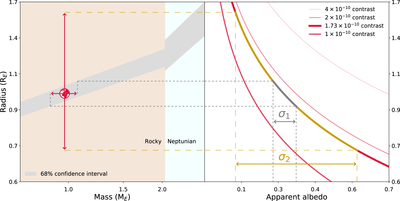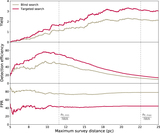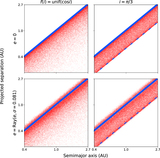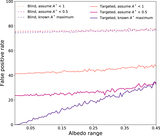Image Details

Caption: Figure 7.
Left panel: planetary mass–radius relation from Chen & Kipping (2017). Gray swath shows 68% confidence interval. Horizontal error bars are the hypothetical mass measurement error, here set at a very optimistic value of 10% (e.g., using 1 cm s−1 precision radial velocity; Plavchan et al. 2018). Vertical error bars show a hypothetical radius constraint retrieved from a Rayleigh scattering spectrum (Feng et al. 2018). The dashed lines show 1σ radius constraints, where gray lines correspond to the mass constraint and ochre lines correspond to the spectral retrieval constraint. Right panel: radius-albedo degeneracy at a constant planet/star contrast of 1.73 × 10−10 (bold line), which corresponds to an Earth twin at quadrature and 1 au separation. Other lines show different planet/star contrasts for the same phase and separation. The error on radius, as estimated from mass or from spectral retrieval, directly propagates to an error on albedo. We might then estimate albedo to within roughly ±0.05 (σ1) or ±0.25 (σ2), respectively, for planets with Earth-like albedo and radius.
Copyright and Terms & Conditions
© 2018. The American Astronomical Society. All rights reserved.









